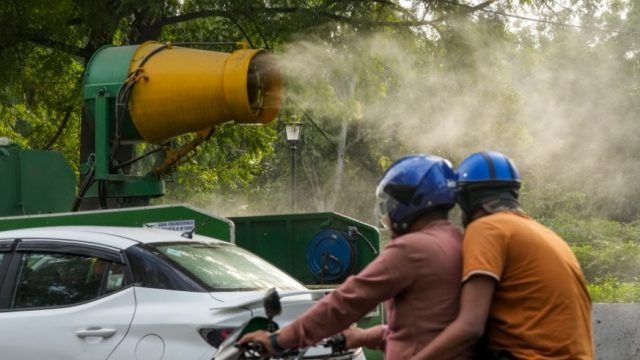On the one hand, the national capital, Delhi, has experienced a bit of a cold breeze since the morning as the temperature has dropped. On the other hand, air quality has also started deteriorating. With the onset of winter, Delhi’s pollution levels start rising, but now from Sunday, the day after Dussehra, Delhi’s air quality has reached the ‘poor’ category.
Effigies of Ravana, his brother Kumbhakarna and son Meghnadu were burnt with firecrackers in an open ground in the national capital during Dussehra celebrations on Saturday. Following this, Delhi’s 24-hour average air quality index (AQI) reached 224 at 4 pm on Sunday (October 13), according to the Central Pollution Control Board’s bulletin.
How is the air quality of your city, check here
A sub-committee of Commission on Air Quality (CAQM), India Meteorological Department (IMD) and Indian Institute of Tropical Meteorology (IITM) reviewed the current air quality and climate forecasts. Accordingly, post-Dussehra, Delhi’s air pollution has already seen a decline, down to 222 by 5 pm and is expected to further decline. The IMD/IITM also said that with improvement in air quality, the AQI could reach the ‘moderate’ category.
However, even today, around 7 am on October 14, Delhi’s average AQI remains poor. Today Delhi’s AQI was recorded as 222. Meanwhile, in Delhi’s Anand Vihar, the AQI was measured at 324, i.e. in a very poor segment.
| Areas of Delhi | AQI |
| Alipur | 235 |
| Anand Vihar | 324 |
| Ashok Vihar | 217 |
| Aya Nagar | 163 |
| Bawana | 248 |
| Burari | 257 |
| Dr. Karni Singh Shooting Range | 194 |
| Dwarka Sector-8 | 267 |
| IGI Airport | 207 |
| Dilshad Garden | 199 |
| ITO | 187 |
| Jahangirpuri | 275 |
| Jawaharlal Nehru Stadium | 159 |
| Lodhi Road | 161 |
| Temple Road | 129 |
| Mundaka | 246 |
| Dwarka NSIT | 202 |
| Najafgarh | 120 |
| Narela | 233 |
| Nehru Nagar | 232 |
| North Campus | 210 |
| Okhla Phase-II | 200 |
| Patparganj | 268 |
| Punjabi Bagh | 300 |
| Pusa DPCC | 155 |
| Pusa IMD | 294 |
| RK Puram | 239 |
| Rohini | 244 |
| Shadipur | 269 |
| Cirifort | 190 |
| Sonia Vihar | 235 |
| Aurobindo Marg | 119 |
| Vivek Vihar | 276 |
| Wazirpur | 284 |
What is the air pollution situation in Delhi-NCR, see special coverage
In view of worsening pollution, a series of restrictions under GRAP will now begin in Delhi. However, at present, the sub-committee said that after a thorough review of the situation for a day or two, it will decide to take action under Phase 1 of GRAP. The statement said that the situation will be closely monitored for further decisions.
GRAP is classified into four phases based on air quality in Delhi.
Stage I – ‘Poor’ (AQI 201-300)
Stage II – ‘Very Poor’ (AQI 301-400)
Stage III – ‘Severe’ (AQI 401-450)
Stage IV – ‘Severe Plus’ (AQI >450).
Under Stage 1, GRAP has called for strict implementation of Supreme Court and National Green Tribunal orders on phasing out of old diesel and petrol vehicles. It has also issued orders to impose a complete ban on the use of coal and firewood in eateries, restaurants and hotels if the AQI exceeds the 200 mark.
How is air quality measured?
If an area’s AQI is between zero to 50, the AQI is considered ‘good’, if the AQI is between 51 to 100, it is considered ‘satisfactory’, if the AQI of a place is between 101 to 200, and if the AQI of a place is between 201 to 300 Considered ‘moderate’. The AQI of that area is considered ‘bad’. If AQI is between 301 to 400, it is considered as ‘Very Bad’ category and if AQI is between 401 to 500, it is considered as ‘Severe’ category. Air pollution causes many diseases.





